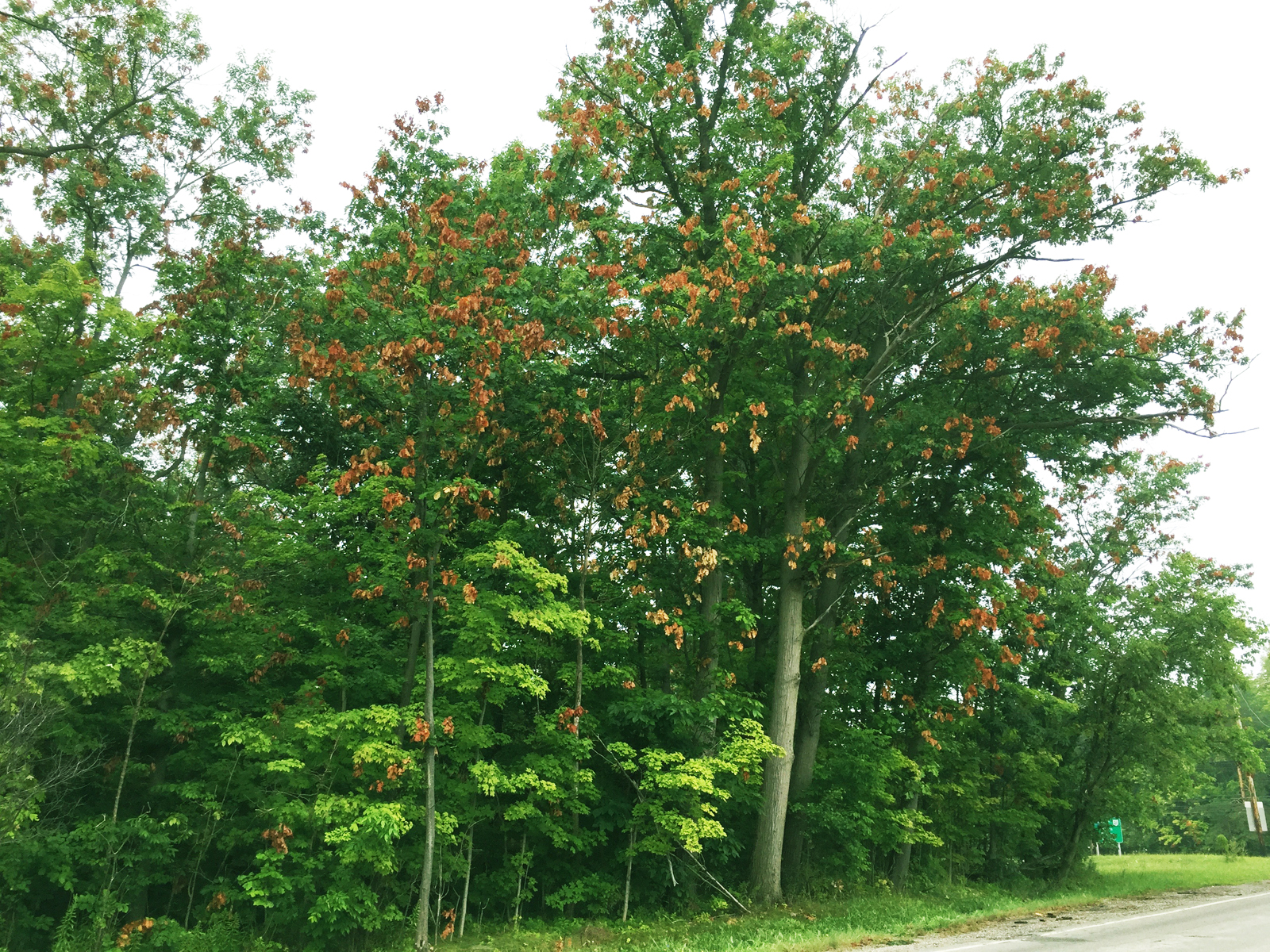Periodical cicadas may cause physical damage to small trees or shrubs if too many feed from the plant or lay eggs in its twigs; such damage can cause “flagging,” or breaking of peripheral twigs. When these twigs die, they become brown. Orchard and nursery owners should avoid planting young trees or shrubs in the years preceding an emergence of periodical cicadas, because young trees may be harmed by severe flagging. Mature trees and shrubs, however, usually survive even dense emergences of cicadas without apparent distress. This can be difficult to believe in the month or so following a large emergence when many deciduous trees turn brown due to the breakage and death of peripheral twigs. As serious as it may appear, such damage is apparently minor. The simplest and possibly most effective way to protect small trees and shrubs is to physically prevent cicadas from feeding and ovipositing by covering the plants with screening material. Periodical cicadas are often too numerous to make application of pesticides practical.

Other than the concern by owners of fruit orchards and nurseries, periodical cicadas are not regarded as pests, except maybe by those who tire of the din of their choruses.
The best way to prevent damage is to cover sensitive plants with bird netting (pictured below) or cheesecloth.

However, before going to the trouble of wrapping plants, it is best to see how many cicadas are out in the immediate area. Female cicadas do not begin laying eggs until at least one week after they first emerge, so there is no hurry.